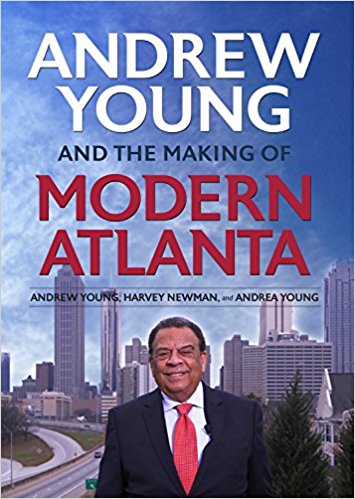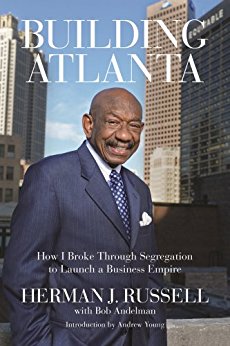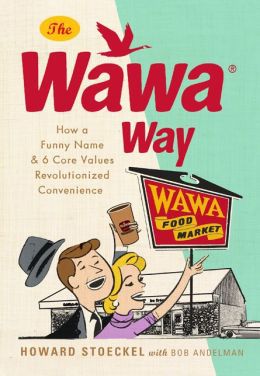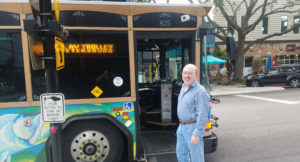
Andrew Young and the Making of Modern Atlanta by Andrew Young, Harvey Newman and Andrea Young. Order your copy today by clicking on the book cover above!
By Bob Andelman
(NOTE: This story, written in May, 1990 for the Maddux Report, was the first of three times–so far–that I have had the pleasure to work with legendary civil rights leader Andrew Young. More recently, I have worked with him in writing introductions to books by two of his close friends, Herman J. Russell and Felker Ward, Jr.–Bob Andelman)
Andrew Young hasn’t been to Tampa Bay very often. Probably wouldn’t know Ybor City from Kenneth City. But the former mayor of Atlanta knows the lure of the metropolitan area well enough to take it very, very seriously.
“Put it this way,” he says “We’re very sensitive to competition in Atlanta. We like to meet and beat the competition. Look around. We don’t see Jacksonville, Charlotte or New Orleans. The only place that is competitive is Tampa Bay.”
Say what?
“We envy the seashore,” he says. “We think we have a very good climate. But we don’t question that maybe yours is a little better.
“The reason people there are surprised by what I said is they see Tampa and St. Petersburg as separate entities,” says Young in a telephone interview. “From the outside, we see it as one tremendous area that if it ever starts working together, could be competition for any place in the United States.”
The former mayor of Atlanta, expanding upon his comments to National Association of Industrial and Office Parks (NAIOP) members in February, says he knows a thing or two about building bridges and replacing political barricades with economic development, two of the hottest topics in Tampa Bay business circles.
And he says the biggest single business challenge to Atlanta is the single market sell of Tampa Bay, Inc.
Long before the Bay area was reaching from Hillsborough to Pinellas counties through the Tampa Bay Partnership, Tampa Bay International Trade Council, Tampa Bay Congress of Chambers of Commerce, Tampa Bay Advertising Federation, Tampa Bay Interconnect, and a variety of super task forces, Andy Young’s Atlanta was bringing as many as 12 diverse counties into its economic web.
What brought them together?
“I think it took a decision on the part of business to think of the economy united instead of as separate political units. The five different banks don’t think of counties. They think of Atlanta,” he says. “Our airport, our mass transit, our highways help. They all tie together, they bring you through downtown Atlanta. We tied mass transit from the airport to downtown to the northern suburbs. And businesses started locating along (the same) highways.”
Can Tampa Bay use Atlanta as a blueprint for more homogenous metro growth?
Absolutely.
Here’s a few examples of Atlanta’s accomplishments in the ’80s under Young’s leadership:
* Redevelopment of Underground Atlanta, a 220,000 square foot, downtown specialty entertainment marketplace. It was financed through a partnership of $37-million in public funds, $19-million in private equity, and $85-million in industrial revenue bonds. The project employs 3,200 people and generates $5-million annually in tax revenues.
* The Downtown Development Authority assisted the city in issuing more than $148-million in industrial revenue bonds used to develop 20 private sector projects with a construction value of $224-million.

Building Atlanta by Herman J. Russell with Bob Andelman; Introduction by Andrew Young. Order your copy today by clicking on the book cover above!
* Central Area Study II brought together business, civic and government officials together to form a consensus for downtown Atlanta’s future development.
* Atlanta invested $6.3-million in the development of the 330-acre Atlanta Industrial Park, which has generated $75-million in private investment. A$2.2-million city investment in Southside Industrial Park returned $16-million from the private sector. The two parks have created or retained 1,500 jobs.
* More than $4-billion worth of new construction has taken place in Atlanta since 1982.
* More than 4,200 new businesses have been licensed in the city, creating 50,000 new jobs.
* According to the Atlanta Chamber of Commerce, 2,775 new projects have begun in metro Atlanta since 1983 with a total value of $67-billion.
* Taking advantage of Young’s years and contacts as U.S. Ambassador to the United Nations, Atlanta has rapidly expanded its international exposure and opportunities. The city hosts 29 foreign banks, 36 consulates, 13 foreign chambers of commerce, and six tourism offices.
Two regional bodies drew the disparate counties together around Atlanta. Every community is represented on the Atlanta Regional Commission. And the Atlanta Action Forum balances 20 black and 20 white leaders from business, civil rights groups, banking, and higher education. They meet once a month, informally, with no minutes taken, no press allowed. “There’s no surrogates,” according to Young. “If a CEO is not present, nobody can represent him. It’s just a group of powerful people who get together informally to think and work for the good of the community.”
Young also credits an “aggressive” area chamber of commerce with building bridges between businesses.
“We made a killing on economic development,” says Young, chuckling. “We got new airlines, new construction – four 50-story buildings are under construction right now. One is a hotel; the other three (office buildings) are half-leased up before they’re complete. And I think we’re going to get the (1996 Summer) Olympics. That and the (1992) Democratic National Convention would just help us take off.”
Young left the mayor’s office to Maynard Jackson in January and is now the Democratic candidate for governor of Georgia and a special consultant to Law Companies Group, Inc. But his pointed remarks regarding the highly charged, competitive air between Atlanta and Tampa Bay created a buzz that still resounds in Bay area business, political and community circles.
Bill Knight, president of NAIOP, wasn’t caught off-guard by Young’s comments. “Having been in the Tampa Bay area for only four years myself, that was a comparison that’s easy for an outsider to make,” he says. “They’re both the banking centers for their regions, the labor pool is comparable. I think Tampa Bay can compete favorably with Atlanta and I think Atlanta realizes that.”
Young, who says he tends to speak off the cuff, formed the tone and tenor of his remarks to NAIOP after meeting with local developers and privately with Tampa Mayor Sandy Freedman. It was the first time the two prominent Democrats had ever met and both came away with positive impressions.
“He told me he couldn’t understand the attitude of some of the people he had spoken to here (who were) negative,” recalls Freedman. “He said he always thinks of Tampa Bay as a competitor. I wasn’t surprised; I think it’s something people here need to recognize. We talk to an awful lot of folks who are looking to relocate their headquarters. And frequently, Atlanta, Tampa Bay and one or two other places top their list.
“I think there’s a lot of comparisons to be made,” continues the mayor of Tampa. “I see a lot of similarities between Atlanta 20 years ago and Tampa today. There’s a lot of lessons to be learned, too.”
Ron Weaver, chairman of governmental affairs for NAIOP’s Tampa chapter, was responsible for recommending Young as featured speaker. “He was invited because of Atlanta’s success – Tampa views Atlanta as a strong competitor. We thought the other star in the southern domain should have a chance to speak. We got an idea when we invited him that he would tie us into a package with our sister city – Atlanta,” says Weaver.
The former mayor of Atlanta was surprised by the hubbub generated by his speech. “I wanted to be supportive of what (Freedman) was trying to do,” he says. “I thought she was on the right track and I was trying to be supportive of her agenda.”
Not everyone is ready to put faith in Tampa Bay/Atlanta comparisons.
“I think it’s a bit of a stretch from several standpoints,” says Bob Carr, managing partner of Carr-Rubin Associates in Clearwater. “Atlanta is a hub. We’re not. We’re the end of the line. You don’t have anywhere to go once you get to Florida. They have a heckuva population of businesses up there that we’re just beginning to be considered by. I disagree with the thought we’re competing with them. I would be real surprised if competition for a company came down to us and Atlanta. I could see us and other Florida locations, but I would find it a real stretch to say Atlanta and Tampa Bay.”
Atlanta is helped in its dominance of Florida by the lack of equally dominant cities anywhere else in the state of Georgia. Atlanta is also the state capital. Florida’s population and business is more spread out, with major regional centers in Tampa, St. Petersburg, Orlando, Miami, Jacksonville, and the state capital of Tallahassee.
Florida’s growth management act is another difference between the two states. Georgia has no comparable legislation and Young – who says Atlanta follows the intent of concurrency less the letter of the law – is not a proponent of copycat rules for his state.
“I think we’ve done it a little more flexibly. Instead of doing it by state law, we’ve done it by regional commission. Before we zone, we negotiate the environmental impact. Nothing is mandated. We try to work with the developers and investors, simply because a state-mandated law scares people away,” according to Young.
Young tells a story about a generous contribution his gubernatorial campaign received from a developer. Young’s administration had earlier denied the man a demolition permit. Instead of sending the man packing, however, the city came up with an alternative solution, swapping parcels of land to make his project work. “Because we had the local flexibility to deal with it,” says Young, “he got what he wanted and we got what we wanted.
” ‘course, I don’t mind you all scaring them off,” he adds, “because they come up here.”
In the case of the spurned-yet-satisfied developer, Young says the man stays in his corner because he knows he’s welcome there. “The main thing that investors want is access,” says Young. “I had to disagree with most of the people who contacted me on special problems. But they wanted their day in court. I tried to be available whether I could help or not.”
One of Atlanta’s strengths over Tampa Bay and other emerging metropolitan areas is the number of major international conglomerates that call Atlanta their corporate headquarters. The list is headed by Coca-Cola, BellSouth, Delta Airlines, Georgia-Pacific, Turner Broadcasting (CNN, Headline News, WTBS, TNT), and Scientific America. While Tampa Bay has a few corporate headquarters of note, it has gained more back-office operations and subsidiary action than headquarters relocation.
The difference is significant.
“These companies (in Atlanta) have more of a stake in the town. We have cultivated a sense of corporate responsibility,” according to Young. “I get a sense that Tampa is having a problem with that because Tampa is a branch office and good people are picked up and moved to the home office.”
Young is sympathetic to Tampa Bay’s dearth of corporate headquarters because Atlanta is itself home to branch offices of two of America’s largest multinationals, IBM and AT&T. IBM has 14,000 employees in the Atlanta area; AT&T has 12,000. “The community response from those two is noticeably different,” says Young. “They’re less involved, even though they’re among the largest companies and employers. In the pursuit of the Olympics, they’re involved, but it’s the home companies that put up the money.”
Good, lifetime corporate citizens are difficult to find and maintain in Tampa Bay, as Young indicates, because they tend to make a short-term mark locally then move on up their corporation’s ladder. No one would undermine even brief community works, but the effect of a locally-based corporation in terms of dollars, volunteerism and education is different than that of a branch office.
The effect of corporate headquarters is felt in many ways.
“Delta Airlines’ headquarters makes a big difference. (Atlanta is their) hub city and they have 30,000 employees here,” says Young. “With Delta, Coke, CNN, and Georgia-Pacific, we have a good, diverse base of industry.”
Atlanta has another major advantage over Tampa Bay and many other metro areas with 29 thriving colleges and universities serving up to 200,000 students. Many of the schools are spinning off actual business activity. They also offer diverse MBA and Ph.D evening courses, which Young credits with upgrading the region’s workforce.
Perhaps the centerpiece of Andrew Young’s economic success as mayor was the way he drew minorities into Atlanta’s growth and development. “Fair share” was a priority and hallmark of his administration – the one-time preacher was, after all, a chief aide to Dr. Martin Luther King during the ’60s. “I think one of the best things we’ve got going for us is affirmative action,” says Young. “In a lot of places, the minority community doesn’t feel a part of growth and development. They are a part of OUR growth.”
Minority participation held up airport expansion at one point because Young’s administration insisted on a minimum of 25 percent minority involvement. While that requirement was declared illegal by the U.S. Supreme Court, it made the mayor’s point of view quite clear to any affirmative action holdouts in Atlanta’s business community.
“They kinda understand it’s good business,” Young says with a laugh. “We have to close streets and do things to sewage (to accommodate construction). I really believe the national corporations understood what we were trying to do. It doesn’t cost you anything and it’s good business, too.”
In the case of a new city hall annex, construction was split between minority and majority contractors and 30 percent of the subs were minority owned and operated. The bid came in $4-million under budget and the job was finished before deadline.
Young claims Atlanta has 12,000 certified, minority-owned businesses that train blacks and others, “making assets of people who in other communities are liabilities through welfare or crime.”
Not that Young was able to solve Atlanta’s crime woes.
“I think the biggest problem we’ve not been able to solve is crime,” he admits. “You don’t ever solve crime. But one of the problems we have … I encouraged very aggressive police work, constant raiding of drug dens by the police. That runs your statistics up. In an attempt to make the city safe, we get a very high crime rate.”
That unique interpretation of Atlanta’s crime rate may not be one that is shared by others in the city.
Another area Young concedes he failed in is Atlanta’s high school dropout rate. While he says 69 percent of city graduates go on to college, a disgraceful 25 percent of all students dropout. Young hopes to prioritize on the problem should he be elected governor; he has at least one harsh idea for correcting the dropout rate.
“One of the things I want to do is recruit more male teachers, particularly from the ranks of the military, to get men with that kind of discipline in the school system,” he says. “You need male role models for the boys. I’d put them in the 6th through 12th grades.”
Young believes that Atlanta shares with Florida the growing homeless crisis. He says the time has come for federal responsibility.
“Our warm climates attract the homeless. We’re caring for them,” he says. “But I’m afraid the homeless are going to grow, the more you care for them. We’re building shelters, but we need to educate these people. We need the federal government’s help. The homeless are not being generated in Florida or Georgia – they’re coming from all over the country.”
One area that Young is credited with improving may not seem important on the face of it. But the transformation of Atlanta’s taxicab hacks into an elite crew of polite, informative, economic developers – “Atlanta Ambassadors” – may save countless business deals from leaving town on a daily basis.
Young devoted his attention to this minor detail of big city life when he heard about a $300-million real estate sale that fell apart. An out-of-town buyer left his hotel and hailed a cab for the two-block distance to the closing. The driver had been waiting in line watching minutes tick by, anxious for an airport fare. Instead he got a guy who wanted to go two blocks, which isn’t worth peanuts. The driver cussed at his stunned passenger – who decided this wasn’t a city in which he cared to do business with after all. So the fare said, you win. Take me to the airport. “He walked out on a $300-million deal,” recalls Young.
Recognizing a major public relations challenge – shades of Reaganism – Young was instrumental in pushing through new taxi ordinances. They required courtesy and crimewatch training for all drivers facing license renewal, new vehicle standards – specific colors, vintage and models – flat fees from the airport to downtown hotels, and a flat $3 fee for travel anywhere in a downtown zone. The city also bumped the overall rate structure upwards to make the changes more palatable to fleet owners and drivers.
“All we did was make them feel a part of the growth and development of the region and let them know we needed their help,” says Young.

Order ‘The Wawa Way’ by Howard Stoeckel, available from Amazon.com in print, ebook or audiobook from Amazon.com by clicking on the book cover above!
 The Party Authority in New Jersey, Pennsylvania, Delaware and Maryland!
The Party Authority in New Jersey, Pennsylvania, Delaware and Maryland!

